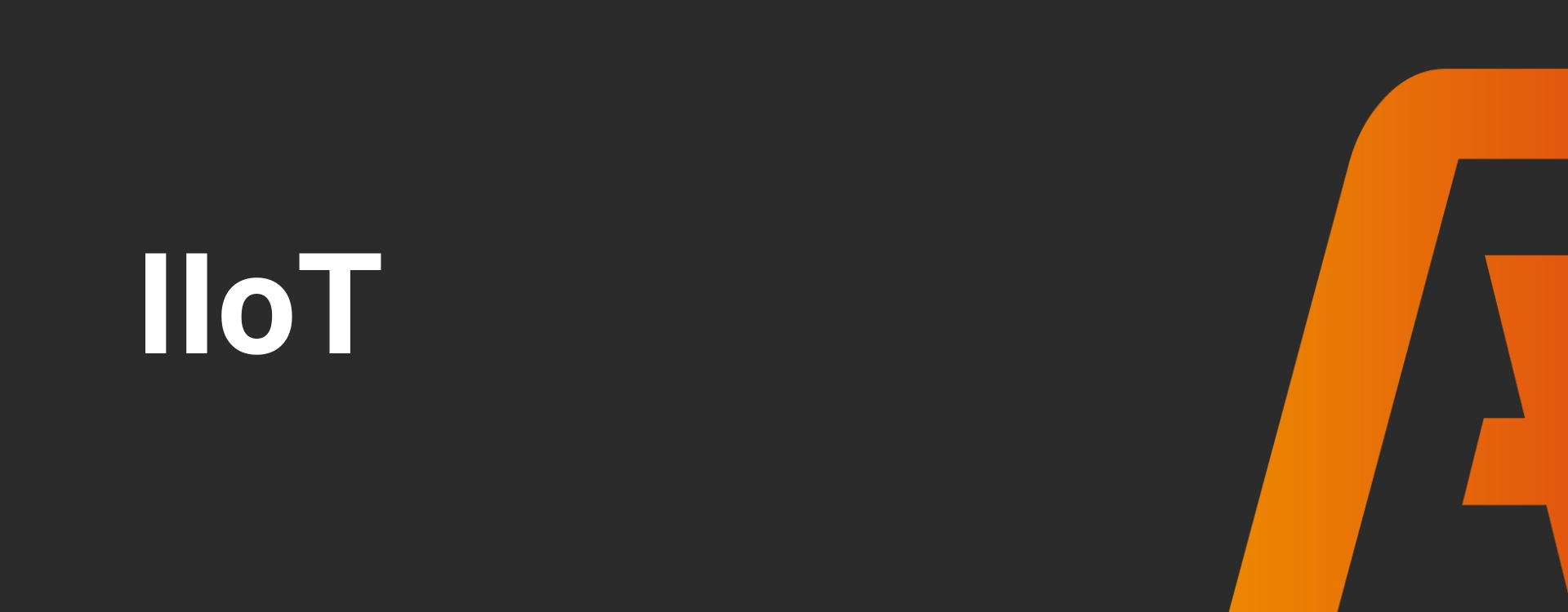» What is IIoT?
» How does IIoT work?
» What are the benefits?
» Who uses it?
» What is the difference between IoT and IIoT?
» IIoT and MQTT
» What is the difference with SCADA?
» Is IIoT the future?
» Why does IIoT bridge the OT and IT gap?
» IIoT and Ignition
» Explore Ignition
Other knowledge base articles
» MQTT
» Open Source
» Industry 4.0
» Edge Computing
» OEE
» […]

IIoT
What is IIoT?
IIoT stands for Industrial Internet of Things. It’s a network of physical devices and sensors connected to the internet, gathering and sharing data. These devices include machinery, vehicles, sensors, and other industrial equipment equipped with data collection technologies.
The aim is to automate and optimize industrial processes by enabling real-time data collection, analysis, and decision-making. IIoT leverages technologies such as cloud computing, big data, machine learning, and artificial intelligence. These technologies process and analyze industrial data to generate valuable insights and information.
How does IIoT work?
Sensors and other industrial devices are utilized to collect data on various aspects of industrial processes, such as temperature, pressure, humidity, vibrations, power consumption, and more. The data collected by the sensors is transmitted via wireless networks to gateways and other collection devices. These data are then stored in cloud-based storage systems for further processing and analysis.
Advanced analytics software is then employed to process the data and derive insights from the vast amount of data collected by sensors. It is possible to automate decision-making, which improves operational efficiency and productivity of industrial processes.
IIoT enables companies to use real-time data to make decisions and take actions to improve efficiency. This results, for example, in automated adjustments to production processes, maintenance schedules, or more efficient energy management.
IIoT also provides real-time monitoring and reporting of industrial process performance, enabling companies to identify trends and patterns and optimize their processes.
What are the benefits?
IIoT offers numerous benefits for businesses and organizations across various industries. Below are some of the key advantages:
- Improved operational efficiency: By collecting and analyzing real-time data, companies can optimize their processes, thereby increasing productivity and efficiency, and bringing products and services to market faster.
- Cost reduction: Costs are lowered through improved production efficiency, reduced downtime, and more efficient use of materials and energy.
- Better decision-making: With real-time data and insights, companies can make better decisions based on facts rather than assumptions.
- Enhanced safety: Gathering data on potential risks and taking measures to avoid these risks helps companies improve the safety of their employees and equipment.
- New opportunities for innovation: Companies can develop new products and services that were previously not possible, for example, by collecting data from machines and sensors and analyzing them to gain new insights and identify new opportunities.
Who uses IIoT?
It is used in a wide range of sectors and industries, including manufacturing, energy, agriculture, healthcare, transportation and logistics, construction, defense, and more. Any company relying on automated processes, equipment, and systems benefits from the opportunities provided by IIoT.
For example, within the manufacturing sector, it is used for monitoring and managing production processes, optimizing production efficiency, and predicting maintenance needs. In healthcare, it is used for monitoring patients and improving remote care.
Transport companies use it to track vehicles and cargo, thereby improving efficiency and safety. Construction companies use it for monitoring construction sites and optimizing construction processes.
What is the difference between IoT and IIoT?
IoT is a network of physical objects, such as household appliances, wearables, and other devices, connected to the internet, transmitting and receiving data. These objects are often designed for use in the consumer market and are used for a wide range of applications, such as smart homes, remote healthcare, and so on.
The key differences between IoT and IIoT are:
- Target Audience: IoT targets the consumer market, while IIoT focuses on industry.
- Applications: IoT applications often focus on convenience and entertainment, whereas IIoT applications aim to improve the efficiency, productivity, and safety of industrial processes.
- Scale: IoT devices are often small and inexpensive, while IIoT devices are often larger and more robust, specifically designed for industrial environments.
- Security: IIoT applications generally require a higher level of security than IoT applications, due to the importance of industrial processes and the potential consequences of a security breach.
IIoT and MQTT
MQTT (Message Queuing Telemetry Transport) is a lightweight messaging protocol designed for IoT devices. MQTT is commonly used in IIoT applications because it requires minimal bandwidth and can handle unreliable network connections. With MQTT, devices send and receive data in a publish-subscribe model, where messages are published to a broker and then delivered to subscribers.
In an IIoT system using MQTT, devices and sensors publish data to a broker, which can then be consumed by other devices or applications. For example, a machine in a factory publishes data about its status and performance to an MQTT broker, which is then used by a monitoring system to alert maintenance teams to potential issues. MQTT is also used to control devices and send commands, making it a powerful tool for IIoT applications.
What is the difference with SCADA?
SCADA (Supervisory Control and Data Acquisition) and IIoT both focus on collecting, analyzing, and managing data in industrial environments. However, the main difference between the two lies in how they collect and manage data.
SCADA systems are typically implemented as a central computer system that collects and manages data from various sensors, controllers, and other devices connected to a local network. These systems are primarily focused on monitoring and managing industrial processes and providing alerts when deviations are detected.
On the other hand, IIoT utilizes the internet and cloud-based technology to collect and manage data from various devices and systems distributed across a wide range of locations. This allows IIoT systems to collect and analyze data on a scale that is not possible with traditional SCADA systems.
Another difference between SCADA and IIoT is that SCADA systems are usually closed systems that can only communicate with other systems within the same network. In contrast, IIoT systems are designed to communicate with other systems and devices via internet protocols, making them easier to integrate with other systems and devices regardless of location.
Is IIoT the future?
It seems that it will be the future of the industry. IIoT offers many opportunities for the industry, including efficiency improvements, cost savings, and new business models. IIoT systems enable the collection and analysis of data on a scale that is not possible with traditional systems, providing companies with insights they did not have before.
Furthermore, it helps reduce errors and unplanned downtime, leading to significant cost savings. By leveraging IIoT technology, companies are also able to better manage their assets, resulting in more efficient operations and reduced operational costs.
Finally, IIoT offers new opportunities for developing new business models. By using IIoT technology, companies can develop new products and services that were not possible before. For example, instead of selling machines, it is possible to offer IIoT services where they pay for the use of machines rather than owning them.
Why does IIoT bridge the OT and IT gap?
IIoT bridges the gap between Operational Technology (OT) and Information Technology (IT) by connecting various technologies and systems, and exchanging data between these systems.
OT systems are used to control a company’s operational processes, such as production lines, machinery, and equipment. These systems are traditionally managed by engineers and technicians specializing in industrial automation and process control.
On the other hand, IT systems focus on information technology and are used to collect, store, and process data. These systems are managed by IT professionals who focus on software development, networking, and data security.
The problem is that these systems are often separate, leading to “silos” of data and information that are not easily shared. This results in inefficiency and delays in business operations.
IIoT bridges this gap by connecting different technologies and systems. By linking sensors, actuators, and other IIoT devices to OT systems, data on operational processes is collected and shared with IT systems. This enables IT professionals to analyze this data and gain insights to optimize and improve business processes.
By bridging the OT and IT gap, IIoT enables data and information sharing between different systems, allowing companies to operate faster and more efficiently. This leads to cost savings, improved quality, and higher productivity.
IIoT and Ignition
Ignition is a popular IIoT platform used for collecting, managing, and analyzing data from smart devices and machinery. The platform offers various tools and features, including HMI/SCADA, data acquisition, database integration, scripting, reporting and analysis, and more.
What are the benefits of Ignition compared to other IIoT software?
- Flexibility: Ignition is highly flexible and customizable to meet the specific needs of an organization. It provides an open and modular platform that allows users to develop their own applications and integrate them with existing systems.
- Scalability: Ignition is scalable and can be used for small, medium, and large projects. It is easily expandable to multiple sites and systems, making it an ideal solution for organizations looking to grow and expand.
- User-friendliness: Ignition has an intuitive and user-friendly interface, making it easy to use for users with different technical backgrounds.
- Connectivity: Ignition offers broad support for various protocols and devices, allowing data from different sources to be collected and integrated.
- Powerful data analysis: Ignition provides powerful data analysis tools, including real-time dashboards, trend analysis, and reporting. The platform makes it easy to gain important insights and respond to changing conditions.
- Reliability and security: Ignition has a proven track record of reliability and security. The platform is designed with robust security features to protect data from unauthorized access and cyberattacks.
Discover Ignition
your way
Start building
For developers
Get started with your own Ignition applications right away.
- Download and install Ignition easily and quickly.
- Explore all features.
- Connect unlimited tags, PLCs, databases, and devices.
Discover how Ignition solves your technical challenges without limitations.
See Ignition in action
For managers
Explore Ignition without any technical knowledge in the demo environment.
- No installation required.
- See how Ignition automates and visualizes processes.
- Adjust live values and see instant results.
Experience real-time automation and discover what it can offer your business.
Want to really know what Ignition can do for you?
Let us come to you for a free demo.
- Meet with our experts and ask all your questions.
- Get personalized advice.
- See how Ignition can optimize your processes.
The perfect opportunity to collaborate with specialists and see exactly how Ignition can help you achieve your business goals.
Start building your own application now!

Discover how Ignition can improve your processes!
Want to see how Ignition automates and visualizes processes without any technical knowledge? Fill out the form and gain immediate access to the demo environment, where you can experience Ignition live.

Schedule a no-obligation demo with our experts!
Want to learn more about how Ignition can optimize your processes? Request a personalized demo and discuss your business goals with our specialists. Fill out the form to book an appointment.

